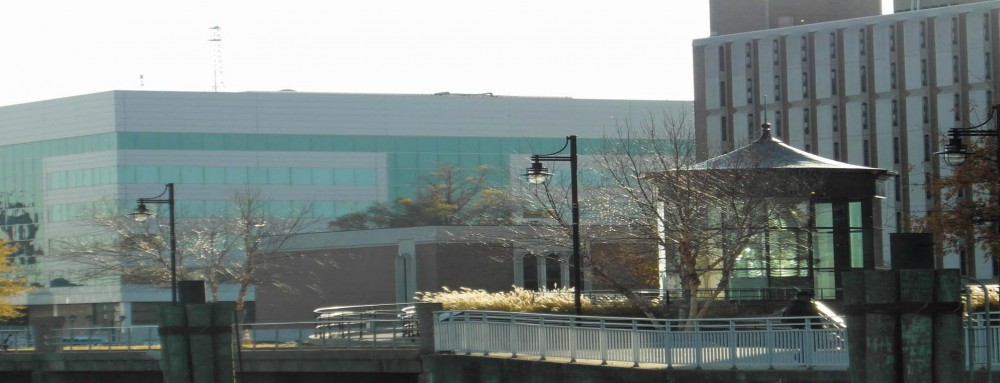If the Sports Section of the Virginian-Pilot is something you automatically place in the recycle bin after glancing at the five-day weather predictions on the back page, you may well have missed the “Portsmouth news story of the day” regarding the future of city funding for the Virginia Sports Hall of Fame and Museum. Although I have expressed my opposition early and often to public subsidies for the VSHoF&M, once it came into existence, I advocated a gradual, incremental reduction in city funding rather than a “cold turkey” cutoff of taxpayer dollars. The direction taken by the ruling coalition on council during this budget season, however, appears to be termination of fiscal life support for the Hall of Fame.
Beginning around the year 2000, the City of Portsmouth engaged in a series of public-private partnership deals that are partially responsible for our above average real estate tax rate: the Renaissance Hotel and Conference Center ($39 million capital investment) and the nTelos Pavilion ($13 million initial capital investment) followed in 2003 by a commitment to the Virginia Sports Hall of Fame and Museum ($2 million capital contribution over five years and an ongoing annual $500,000 operating subsidy). The business case for the first two projects was that revenue from the investments would pay the debt service, something that has neither happened to date nor appears likely going forward. In consequence the general fund takes a yearly $2.5 – $3 million hit, which is roughly equivalent to 4.4 cents of the real estate tax rate. The spokespeople for the VSHoF&M were careful not to make claims that it would pay for itself, preferring to characterize it as a downtown “people circulator” that would improve the health of businesses in that district and thereby increase tax revenues. That sort of “squishy” metric, though, is easily asserted and close to impossible to substantiate.
As one who has haunted Portsmouth City Council meetings on a consistent basis since 1998, I was on hand when the chief proponent for the Hall of Fame brought the memorandum of understanding to city council for approval. Presented on August 12, 2003, as a public hearing item, the timing of the issue appeared intended to minimize the potential for public comment. After all, August is well past the traditional budget adoption time frame, well before serious consideration of the next budget, and very near the end of the school vacation season. City council members, city staff, and public safety personnel greatly outnumbered the citizens in the council chamber that evening, the reverse demographic for even a moderately slow meeting night. The presentation of this agreement to expend public money in significant amounts appeared calculated to come in “below the radar”. I raised my voice in opposition to the measure, but absent a broad-based expression of community concern and with support from the “power elite” of the city, the 7-0 vote of council approval was no surprise.
Over and above the direct contributions, the “invisible” financial support the city provided the Hall of Fame was not inconsequential. Portsmouth donated the land on which the building sits and paid for the transformation of the former Middle Street Mall into a two-way street. It has also allowed numerous partial closures and other obstructions of traffic that the museum operators have requested during museum construction and since. For a private undertaking, the Virginia Sports Hall of Fame and Museum has received more favorable treatment than many other businesses nearby and across the city.
Even though I have long advocated the gradual elimination of city subsidies to VSHoF&M, I have not wished for the institution to “go dark”. It often serves as a venue for a variety of civic gatherings, provides SOL-linked programs for school children, complements the Children’s Museum, and enhances the safety and eye appeal of lower High Street. My desire has been for it to “get off the dole” by developing a sound business plan. The precipitous cutoff of local tax dollars currently underway jeopardizes its viability, and the prospect of its becoming a city-owned entity by default is completely unacceptable. The taxpayers would end up on the hook for its current debts and full operating costs rather than just subsidizing them. We need to negotiate a new memorandum of understanding that protects the interests of the public while keeping the VSHoF&M a going concern.

Hi,
I thought I would mention that it looks like the word “publically” is spelled incorrectly on your website. I’ve seen some tools to help with problems like this such as SpellAlert.com or WebsiteChecker.com. I just thought you should know!
-Kyle
Merriam Webster acknowledges “publically” as a less common form of “publicly”, and we are fond of “the road less traveled”. (See https://www.merriam-webster.com/dictionary/publically.)